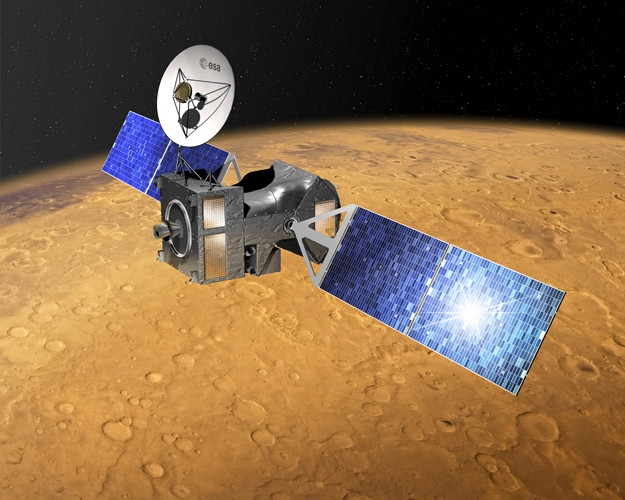Interplanetary mission: 'Ballistic capture' allows safer and cheaper way of orbit insertion

A safer, smoother and cheaper way to place spacecraft in orbit has been suggested in a new theoretical study.
In a technique called ballistic capture or low-energy transfer that will see craft flying in formation with the destination planet, scientists hope to do away with launch window delays as well as traditional orbit placements that are energy guzzling and often risky.
Lobbed into an orbit similar to the planet's, the craft will fly millions of kilometres ahead of the planet initially and cruise to a speed where the planet's gravity pulls it into a planetary orbit, reports Scientific American.
The technique replaces the brute force orbit insertion, called Hohmann transfer, with a "delicate dance" approach.
It could help open the Martian frontier for more robotic missions, manned expeditions and possibly human colonisation.
"It's an eye-opener," says James Green, director of Nasa's Planetary Science Division. "It could be a pretty big step for us and really save us resources and capability, which is always what we're looking for."
While launch and cruise costs remain the same, the fuel burn to slow down the craft from thousands of kilometres per hour speed to a fraction of that is done away with.
In the process, the mission does away with pounds of fuel. Fuel needs for the overall journey drops by 25%, allowing for bigger payloads at comparable prices.
The method reduces danger to the craft because the vessel no longer has to decelerate.
Edward Belbruno, a visiting associated researcher at Princeton University and Francesco Topputo of the Polytechnic University of Milan, detail in a paper the new path to Mars and the physics behind it.
The paper, posted on arXiv, has been submitted to the journal Celestial Mechanics and Dynamical Astronomy.
"Launch windows" are the optimal orbital alignments of Earth and Mars that happen around only every 26 months. By not having to wait so long, ballistic capture can help maintain a steady stream of supplies to the planet.
Planetary bodies create bowl-like depressions in the spacetime fabric around them. When a spacecraft passes close to the bowls at a reduced speed it can be made to "roll" down into the bowl without using fuels.
While Belbruno's technique suggested two decades ago did work well with lunar orbit insertion, repeating on Mars comes with challenges.
The Red Planet's velocity is much higher than the Moon's. The "bowl," or depression is not that deep to begin with as it is a too-rapidly moving target itself.
That is when Belbruno thought of the formation flying technique.
But the capture altitude is high at 20,000 kilometres above Mars, not ideal for satellites studying the planet. A little extra fuel can gently lower spacecraft into standard orbits of around 100 to 200 kilometres.
© Copyright IBTimes 2025. All rights reserved.





















